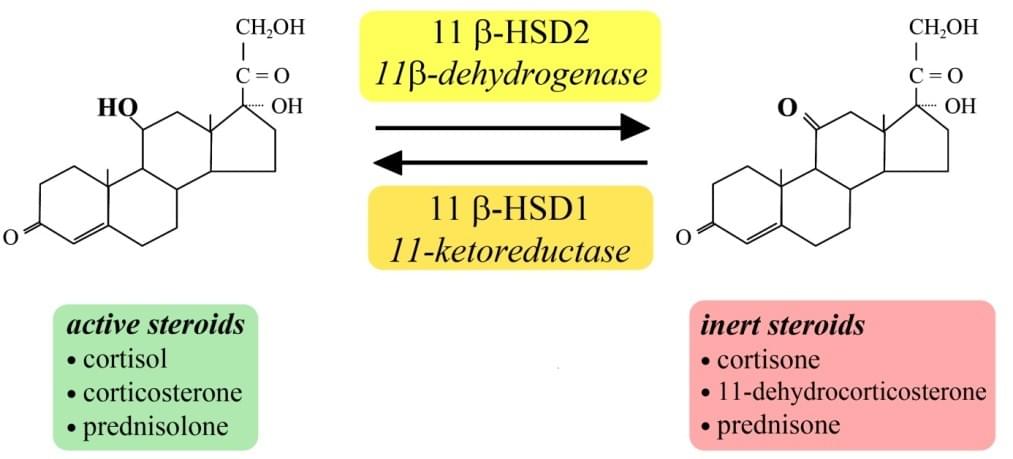Custom MemPro™ 11-beta Hydroxysteroid Dehydrogenases (HSD-11β)
Creative Biostructure provides advanced custom MemPro™ gene-to-structure services for HSD-11β (also named 11β-HSD).
HSD-11β are a group of enzymes that catalyze the interconversion of cortisone into cortisol depending on NADP+ or NAD+, which can regulate the access of glucocorticoids to the steroid receptors. These enzymes belong to the family of oxidoreductases, which participate in C21-steroid hormone metabolism and androgen and estrogen metabolism. HSD-11β are mainly expressed in the endoplasm reticulum of aldosterone-selective epithelial tissues, such as kidney and liver.
 Figure 1. The conversion of cortisone to cortisol.
Figure 1. The conversion of cortisone to cortisol.
Cortisol is a glucocorticoid that can bind the glucocorticoid receptor. The molecule of cortisol is similar to aldosterone that can bind the mineralcorticoid receptor. Since mineralocorticoid shares much similarity with glucocorticoid, HSD-11β oxidizes cortisol to inactive cortisones to prevent the illicit activation of mineralocorticoid or glucocorticoid receptors in different tissues. HSD-11β co-localizes with intracellular adrenal steroid receptors. Deficiency of HSD-11β will cause severe conditions known as apparent mineralocorticoid excess syndrome (AME), which is characterized as low potassium level, hypertension and reduced plasma renin. Polycystic ovary syndrome (PCOS) is also believed to relate to the deficiency of cortisone conversion to cortisol. In human, there are two HSD-11β isoforms, including type 1 11β-HSD (11β-HSD1, NADPH-dependent) and type 2 11β-HSD (11β-HSD2, NAD+-dependent). It has been reported that 11β-HSD1 has bidirectional activity, while 11β-HSD2 mainly converts cortisol into cortisone. 11β-HSD1 is highly expressed in key metabolic tissues, including liver, adipose tissue, and the central nervous system. 11β-HSD2 is expressed in aldosterone-selective tissues, including kidneys, liver, lungs, colon, salivary glands, HSD2 neurons and placenta. HSD 11β play crucial roles in blood pressure regulation and yndrome of apparent mineralocorticoid excess.
Creative Biostructure can provide various custom MemPro™ gene-to-structure services for membrane protein family, including the identification, isolation, purification, stabilization, and crystallization of membrane proteins of your interest. Please feel free to contact us for a detailed quote.
References:
11-Beta hydroxysteroid dehydrogenase. (https://en.wikipedia.org/wiki/11-Beta_hydroxysteroid_dehydrogenase).
J. W. Tomlinson and P. M. Stewart (2001). Cortisol metabolism and the role of 11beta-hydroxysteroid dehydrogenase. Best Pract. Res. Clin. Endocrinol. Metab., 15(1): 61-78.
P. C. White, et al. (1997). 11β-Hydroxysteroid dehydrogenase and its role in the syndrome of apparent mineralocorticoid excess. Pediatric Research, 41: 25-29.
P. Ferrari and Z. Krozowski (2000). Role of the 11beta-hydroxysteroid dehydrogenase type 2 in blood pressure regulation. Kidney Int., 57(4): 1374-1381.
S. H. van Uum, et al. (1998). The role of 11 beta-hydroxysteroid dehydrogenase in the pathogenesis of hypertension. Cardiovasc Res., 38(1): 16-24.